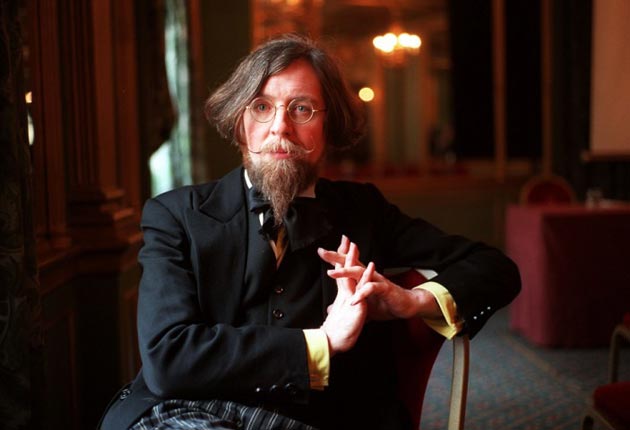David Lister: It helps if those running the show are straight with their audiences
The Week in Arts

Two wildly different areas of the arts struck me this week as being economical with the truth. In the case of the cuts, I thought the Arts Council did not do that bad a job of spreading the pain without causing too much lasting damage to the nation's cultural fabric.
We should not simply and crudely scream "cultural vandalism"; we should think about how a new cultural landscape might emerge. The Almeida Theatre in north London, for example, had a curiously large cut, but we all know that there will still be an Almeida in five years' time. It will find different ways of raising money, and how it does that will be worth watching.
However, I was appalled that the Arts Council did not publish a list of the 200 or so companies that were to lose all funding. Journalists scrabbled around trying to put the clues together, but it was disgracefully lacking in transparency not to make the list public. The Culture Secretary, Jeremy Hunt, should tell the Arts Council, the quango that distributes the money, to make the list public immediately.
And now for something completely different: far less apocalyptic, far more entertaining, but also with a question mark about honesty and transparency. It was Agony and Ecstasy, the diverting and watchable BBC fly-on-the-wall series about the English National Ballet. The series chronicled the company's rehearsals for last Christmas's production of The Nutcracker, choreographed by the company's artistic director, Wayne Eagling. There were a number of travails along the way, including a hot-air balloon that didn't materialise on stage, but the three-part series climaxed with narrator David Morrissey intoning with due solemnity: "Wayne's production has become the most successful Nutcracker in living memory."
That's quite a climax, and quite a claim. It certainly made me sit up. Surely the likes of the Royal Ballet and Bolshoi might have something to say about that. So I contacted English National Ballet and put that to them. Ah, they responded, "most successful in living memory" actually only referred to the ENB. Fair enough, the series was about the ENB. But I seemed to recall that the reviews of the production were decidedly iffy, more than one calling it under-rehearsed. Ah, they responded, "most successful in living memory" actually referred only to audience figures.
Also fair enough. But even that is quite a claim since the company, in its various guises, has performed The Nutcracker every year since 1950. Ah, they responded, "most successful in living memory" actually referred only to audience figures at the ENB since their records began. And when was that – 1955, 1956? Well no, actually, records began only 10 years ago. So "most successful in living memory" refers only to the past 10 years. Well, no actually, because for one of those years the company did not dance at the Coliseum so a comparison with a different-sized auditorium would be invalid.
Ah, so "most successful in living memory" actually means the best attended in nine years. Is that a leading arts company and our national broadcaster being rather misleading? Perhaps, in this very difficult week for the arts, we should just say that they have a better sense of what makes a good television climax than I do.
Won't get fooled again
Yesterday, appropriately enough on April Fool's Day, Bloomsbury republished William Boyd's biography of the artist Nat Tate, 13 years after the book first appeared. Appropriately – because there was no such person. Boyd's book was an art-world hoax. I had some involvement in this saga, being the journalist who uncovered the hoax on the front page of The Independent after attending the glittering party to launch the book in Jeff Koons's studio in New York, a launch presided over by David Bowie.
The hoax certainly took in a number of art critics present, though none, of course, will admit to that now. But, though it provides me with interesting memories, I don't quite see the point of publishing the book again. It was clever and funny, because readers might have believed every word was true, right up to Nat Tate burning all his art and committing suicide by jumping off the Staten Island ferry. Now that the whole deception has been well known for 13 years, it is no longer going to fool anyone. Perhaps that makes it a very postmodern April Fool.
Live the dream and look the part
I can't recommend too highly The Cult of Beauty exhibition that opened this week at the Victoria & Albert Museum. The survey of the leading lights of the 19th-century Aesthetics movement and their love of beauty and art for art's sake ranges from the Pre-Raphaelites to Oscar Wilde. I'm only sorry that those who visit the exhibition won't have the chance, as I did on the opening night, to catch a glimpse of the show's lead curator, Stephen Calloway. This V&A staffer certainly looks the part. He has been described as "having a nice line in brocade waistcoats, cravats and Inverness capes". He also sports a twirled moustache and a pointed goatee beard. At the V&A, his CV says he "has made a particular study of the cults of romanticism, decadence and dandyism".
One can tell from his dress and appearance that this is a curator who lives the dream.
Join our commenting forum
Join thought-provoking conversations, follow other Independent readers and see their replies
Comments